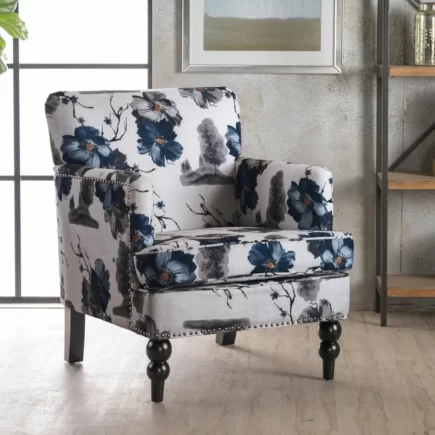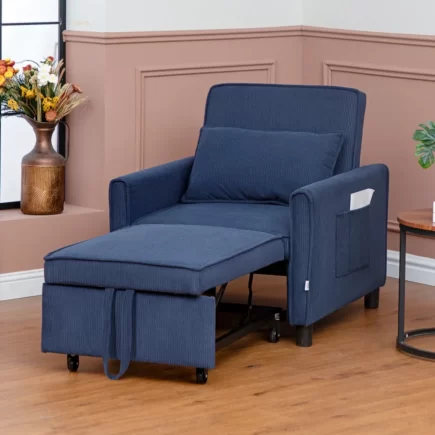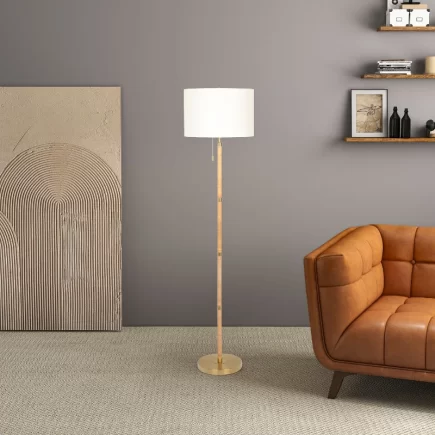
An old rocking chair can be more than just a piece of furniture; it might be a cherished family heirloom, a nursery must-have, or your favourite reading nook. But when the fabric begins to wear, the padding sags, or the design no longer suits your décor, it’s tempting to send it off to the curb.
Before you do, here’s the good news: reupholstering a rocking chair is completely doable, yes, even if you’re a beginner. In fact, with the right materials, tools, and guidance, you can give your rocker a new lease of life for a fraction of the cost of buying new.
Equipment You’ll Need
Before you begin, gather all the essentials. Investing in the right tools ensures smoother progress and a more professional result.
Tools and Supplies Checklist

- Staple Gun (manual or pneumatic): For attaching fabric, batting, and webbing securely.
- Upholstery Staple Remover: To remove old staples without damaging the wood.
- Pliers and Screwdrivers: For disassembly and hardware removal.
- Scissors/Fabric Shears: For precise cutting of fabric and padding.
- Foam Cutter or Serrated Knife: To shape seat and back padding.
- Measuring Tape: For accurate measurements of foam and fabric.
- Tack Strips/Nailhead Trim: For decorative finishing touches.
- Upholstery Hammer: For installing decorative tacks or studs.
Materials
- Upholstery Fabric (Durable and Thick): Choose a strong material to withstand use (e.g., cotton, linen, or velvet).
- Foam (2″–3″ thick): For seat and back padding.
- Batting (Polyester or Cotton): To provide cushioning under the fabric.
- Jute Webbing or Springs (optional): For extra support under the seat.
- Decorative Extras: Such as piping, Velcro, or zipper covers for added flair.

Safety Gear
- Safety Glasses: Protect your eyes from debris.
- Work Gloves: Keep your hands safe while handling tools.
- Dust Mask: For protection against dust when sanding or removing old padding.
Step-by-Step Guide to Reupholster
Step 1: Prepare for the Project
- Choose the Right Workspace: Pick a well-lit, well-ventilated area such as a garage, workshop, or spare room. Good lighting will help you see details clearly, and proper airflow is essential if you’re using adhesives or cleaning solutions.
- Raise the Chair to a Comfortable Height: Avoid back strain by placing your chair on a sturdy table, workbench, or sawhorses. This allows you to work comfortably without having to crouch or hunch over.
- Document the Chair: Take detailed photos of the chair from all angles before you begin. This documentation will help you remember how fabric layers were attached and how the chair was assembled, making the reassembly process much easier.
Step 2: Disassemble the Rocking Chair
Remove the Fabric and Padding:
Start by carefully removing the outer fabric layer with a staple remover. Use pliers to remove any tacks or staples that might be stubborn. Keep the old fabric and padding in case you want to reuse them or use them as templates for measuring.

Inspect Padding and Webbing:
Check the foam and batting for damage. If they’re still in good condition, you may be able to reuse them. If not, replace them with new padding. Remove any worn webbing or springs, if necessary.
Keep Track of Parts:
As you disassemble the chair, label and stack the parts in a way that will make it easy to reassemble later. Take notes or additional photos if necessary.
Step 3: Clean and Repair the Wooden Frame

- Clean the Frame: Wipe down the entire frame using a cleaner like mineral spirits. This will remove built-up grime, grease, and old wax that might prevent paint or stain from adhering properly.
- Sand the Surface: Lightly sand the surface using medium-grit sandpaper (120–150 grit). Focus on edges and areas where old paint or varnish is uneven or peeling.
- Tighten and Repair Joints: Inspect the frame for any loose joints. If a joint is wobbly or has gaps, apply wood glue inside, clamp the joint securely, and let it dry for several hours.
- Refinish the Frame (Optional): For a fresh look, apply a wood stain or paint of your choice. Once the finish is dry, seal it with a clear polyurethane or lacquer to protect it from wear and moisture.
Step 4: Measure and Cut the Fabric and Foam

- For the seat base, measure the width and depth, and add 2–3 inches per side for the fabric overlap.
- For the backrest, measure the height and width, adding seam allowance for a snug fit.
- For armrests (if padded), measure the length and width to allow for wrapping the edges.
Use the old fabric as a template for curved shapes and trace the seat and back shapes onto the foam with a marker. When cutting, ensure the foam fits snugly inside the frame.
Step 5: Upholstery: Attaching the Fabric
- Position the Fabric
Lay the fabric face down on a clean surface. Place the chair (with foam and batting) upside down on top of the fabric. - Cut the Fabric
Cut the fabric so it’s 2–3 inches larger than the padded area on all sides. If your fabric has a pattern, align it carefully for symmetry before cutting. - Stapling Process
Start at the center of the front edge, pull the fabric tight, and staple it to the underside of the wood. Move to the back edge next, pulling the fabric taut, and staple again. Repeat this for the sides, working your way around the chair. Make sure the fabric is tight to avoid wrinkles.
Step 6: Tackling Corners and Curves
- Square Corners: For square corners, tuck one side of the fabric inward, then fold the adjacent edge over it. Pull it tightly and staple it to the wood. Repeat on all corners for consistency.
- Curved Edges: For curved edges, create small pleats every 1–2 inches to help the fabric wrap smoothly around the curves. Staple each pleat securely, trimming away any excess fabric underneath for a clean look.
- Handling Spindles and Armrests: For areas with spindles or armrests, make Y-shaped cuts in the fabric. This allows it to wrap around obstacles easily. Fold the raw edges inward and staple them behind or underneath the spindles.
7. Trim and Clean

For a neat professional finish, clean up the underside of the chair.
- Trim away excess batting and fabric.
- Add a dust cover (cambric fabric) to hide staples and webbing.
- Staple the dust cover tightly along the bottom edge of the frame.
Maintain and Clean Your New Upholstery
Protect your investment with smart maintenance:
- Use fabric protector spray to guard against spills and UV damage.
- Vacuum regularly to remove dust and debris.
- Spot clean stains using a mild detergent and a damp cloth.
- For stubborn stains, follow the care guide provided by the fabric manufacturer.
Enjoy Your Reupholstered Rocking Chair
Reupholstering a rocking chair is more than a DIY project; it’s a transformation. With a modest investment and some hands-on effort, you’ll gain a stylish, custom, and comfortable chair that reflects your personality. Whether it’s an heirloom passed through generations or a thrifted treasure ready for revival, you now know how to breathe new life into it. So sit back, relax, and rock on. Ready to explore lounge seating options that combine comfort with visual appeal. Browse Aosom’s full collection of Lounge Chairs for pieces that elevate any space.
FAQs
1. Can you reupholster a rocking chair without removing the old fabric?
While it’s technically possible, it’s not recommended. Leaving the old fabric underneath can create uneven surfaces, cause the new fabric to wear faster, and add unnecessary bulk. It’s always best to start fresh by removing all previous layers.
2. How to choose a fabric that’s pet- or kid-friendly?
Opt for tightly woven, stain-resistant fabrics like microfiber, performance polyester, or canvas. Avoid silk, velvet, or loose-weave materials, as they attract hair, snag easily, or are difficult to clean.
3. Can spray adhesive be used instead of staples for upholstery?
Spray adhesive can help hold foam and batting in place temporarily, but it shouldn’t replace staples or tacks for attaching the final fabric. It’s best used as a support not a substitute for mechanical fastening.
4. How to handle rocking chairs with non-removable cushions?
For fixed cushions, you’ll need to stretch and staple the fabric directly to the frame. This requires careful measurement and folding techniques, but it’s very doable with patience and attention to detail.





























